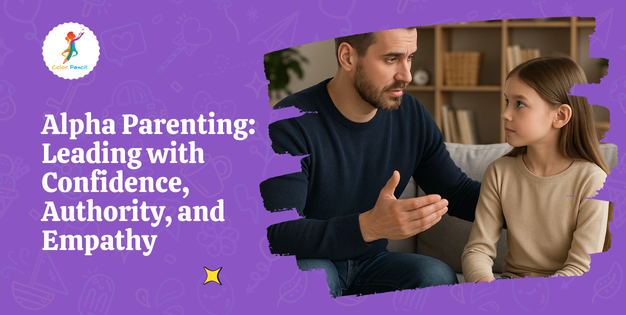
Alpha Parenting: Leading with Confidence, Authority, and Empathy
Balancing Leadership and Connection in Parenting The alpha style of parenting is often critiqued because of its name. The term ‘alpha’ often connotates a more

Understanding the Drive to Protect and How to Balance It
Each parent tends to worry about their child’s life – wishing to protect them from pain, disappointments, and failure. For some parents, these instincts materialize in what is usually regarded as “snowplow parenting.” Snowplow parents strive towards ensuring there are no hindrances for their children before they attempt facing obstacles.
While the motivation behind this style of parenting stems from profound affection and safeguarding impulses, it makes us wonder if sometimes, it is a healthily balanced concern or obsession with overdoing it.
In this case, let’s try to find out the definition of snowplow parenting, analyze its psychological motives, study the positive and negative impacts of using this parenting strategy, along with offering tips on how to implement it with moderation.

Like snowplowing snow off the road, snowplow parenting entails actively solving problems and removing obstacles in advance. It focuses on taking action to smooth out the child’s path and ensuring that hustles, be it with a coach, teacher, emotions, or even friends, are as painless as possible.
Different from hovering or micromanaging, as seen with helicopter parenting, snowplow parenting focuses on offering help before even recognizing a challenge. It is done mostly out of concern for the child to ensure that they have a successful and smooth journey.
Snowplow parenting is most often driven by love, worry, and a desire to protect. In a world that often feels competitive, unpredictable, and high-stakes, parents may feel that clearing obstacles is the kindest thing they can do for their child.
Parents may also adopt this style because of:

Snowplow parenting can offer short-term benefits as long as it is done carefully and in moderation, including:
In some cases, particularly during early childhood or other vulnerable stages, intervening to clear obstacles can be perfectly reasonable.
While well-intentioned, consistently removing obstacles may hinder children’s ability to cope, adapt, and problem-solve.
It is important to recognize that facing challenges, with parental support in the background, is how children gradually build strength and confidence.
Snowplow parenting can be approached in a more reasonable way. Parents can learn to provide support to their children without completely removing every challenge.
Ask, “Does this require a lot of help from me? Could my child handle it with some guidance?”
Guide children through manageable difficulties that require some level of independence.
Encourage self-driven solutions and ask them to figure out different ways to resolve issues instead of doing it for them.
Capture your child when they begin to fall, but do not remove the obstacles beforehand.
Children learn all they need to know from observing,” so model healthy coping to your child when confronting your own challenges.

There are moments when snowplow parenting is not only appropriate but necessary:
The key is to step in when needed, but not every time.
Feeling Overwhelmed? Let’s Talk! Join Our Parent Forum and Get Expert Advice & Support!
Love is the driver’s seat of snowplow parenting because it allows a mother or father the ability to take care, protect, and guide a child into the solution, removing any barriers or struggles along the way. Coping with challenges is equally important during childhood. By adjusting the ‘how’ and ‘when’ someone intervenes, a child will learn to adapt and grow positively.
The primary aim is not to eliminate every challenge. Instead, walk with the child, make sure they are feeling safe and encouraged while trusting that they can learn to maneuver the obstacles independently.